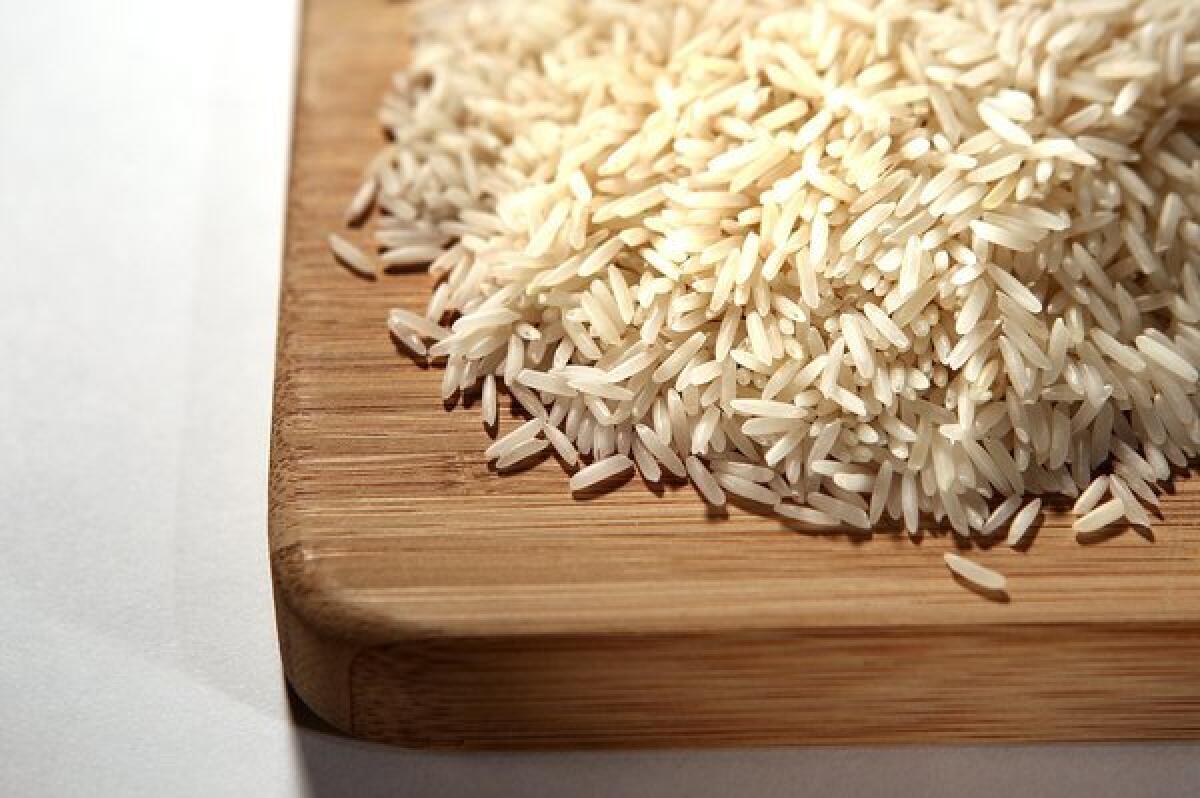The California Cook: After 30 years, basic training in rice

I’ve been cooking rice for more than 30 years and just now discovered I’ve been doing it all wrong.
All this time I’ve been following the same basic pilaf method — probably learned from an old Pierre Franey column or something like that. I melt some shallots in butter, add the rice (about a cup for 3 or 4 people), add water or stock (11/2 to 13/4 cups), bring it to a simmer, cover tightly and cook until the water is absorbed, about 15 to 20 minutes. Sound familiar?
About as advanced as I ever got was discovering that if I let it stand for 5 minutes off heat after cooking, the rice wouldn’t mush together as much when I stirred it.
Like I said: 30 years following that technique and never really thinking about what I was doing. The rice was perfectly acceptable. In other words, it was just good enough that I never gave it a second thought. It’s rice, right?
My epiphany came — as have so many others lately — from cookbook writer Yotam Ottolenghi. I was grilling some spiny lobsters from Pearson’s Port in Newport Beach and found a recipe for pilaf with saffron, dates and almonds in one of his columns in the British newspaper the Guardian that sounded like it might be the perfect accompaniment.
And then I read it. The technique was something I’d never seen before. It seemed so crazy I really had to try it.
First, Ottolenghi soaks the rice. Now, I don’t even soak beans, and I’m going to soak rice? Then, instead of cooking the rice with a measured amount of water, he cooks it in a big pot like pasta. Huh? And very briefly. I mean, like four or five minutes. Then he transfers the damp rice to a dry saucepan and steams it very, very slowly. Finally, he lines the lid with a kitchen towel and lets the rice stand off heat for 10 minutes.
What the heck? But when I tried it, the rice was terrific. It wasn’t so much the flavor (rice, after all, pretty much is rice), but the texture. The grains were perfectly shaped, completely separate with no clumping, and so light they seemed to float off the plate.
At this point, I probably have about a hundred dedicated home cooks from Middle Eastern families firing up their iPhones to send me angry emails. Yes, I realize that this may well be how your mom fixed rice and your grandma and great-grandma before her. But it was a revelation to me.
In fact, looking through a bunch of recipes from the area — I’ve got a stack of books from Iran, Turkey, Lebanon, Syria and Armenia on my desk — I find this technique used only occasionally. Most pilafs seem to be made according to something more similar to my old method.
As near as I can determine — and I’m sure someone will straighten me out if I’m wrong — it is an adaptation of Persian polo (also called polow and in its simplest form chelo). Carried to its ultimate stage of refinement, it results in the blessed state of ta-dig, a crisp crust of browned rice that forms on the bottom of the pan. I’ve had this at restaurants and in people’s homes, but I’ve never succeeded in making it.
This technique even works with dishes that aren’t strictly in the Persian pilaf tradition. I really loved the flavors of a Turkish rice dish I’d fixed called müceddere. Made with chickpeas, lentils and orzo pasta in addition to rice, it also had great potential as a vegetarian main course, especially after I added a dollop of good yogurt.
But as delicious as the dish was when made using something like my old technique, it was a mite, shall we say ... stodgy? With four different kinds of starch, go figure.
However, when I tried the recipe again using this new pilaf technique, not only was the texture lighter and more delicate, the flavor was improved as well. The tastes of the individual ingredients had more of a chance to shine through.
It really is one of the great things about cooking: No matter how long you do it, you’re always learning something new. Let’s just hope it doesn’t take me another 30 years to master ta-dig.
More to Read
Eat your way across L.A.
Get our weekly Tasting Notes newsletter for reviews, news and more.
You may occasionally receive promotional content from the Los Angeles Times.







